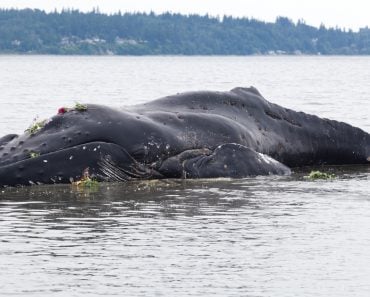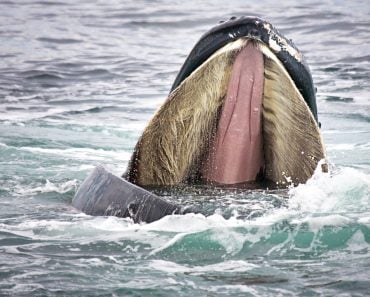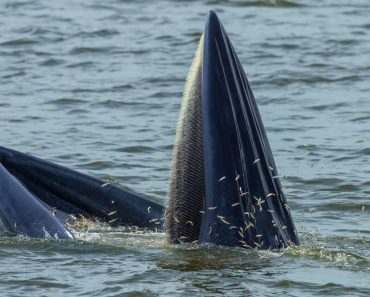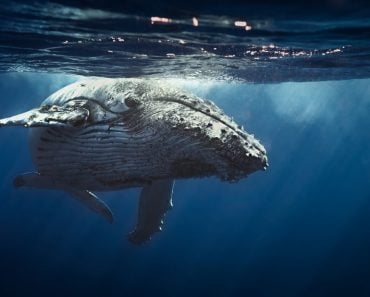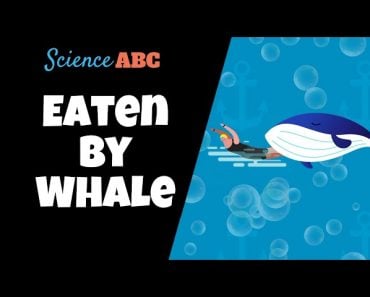Table of Contents (click to expand)
Gravity limits the size of land mammals. Metabolic rate and heat retention play a role in determining the size of marine mammals, driving them to be larger.
“Oh, man! admire and model thyself after the whale! Do thou, too, remain warm among ice. Do thou, too, live in this world without being of it. Be cool at the equator; keep thy blood fluid at the Pole. Like the great dome of St. Peter’s, and like the great whale, retain, O man! in all seasons a temperature of thine own.”
In Herman Melville’s seminal work, Moby Dick, Captain Ahab is obsessed with getting revenge against a white whale. However, his bloodthirst doesn’t stop him from marveling at its gigantic beauty. Very few animals on land have reached such gigantism as the mammals of the oceans.
Blue whales are the largest animals to have ever existed on Earth. An adult blue whale can stretch 23m (75 feet) to 30.5m (100 feet) from head to tail, about as much as a 7-10 story building, and can weigh about 177 tons. Compare this to the largest land mammal today, the African bush elephant’s 3.7m (12 feet) height and 2 to 7 tons of mass. Why don’t we have mammals the size of blue whales on land?
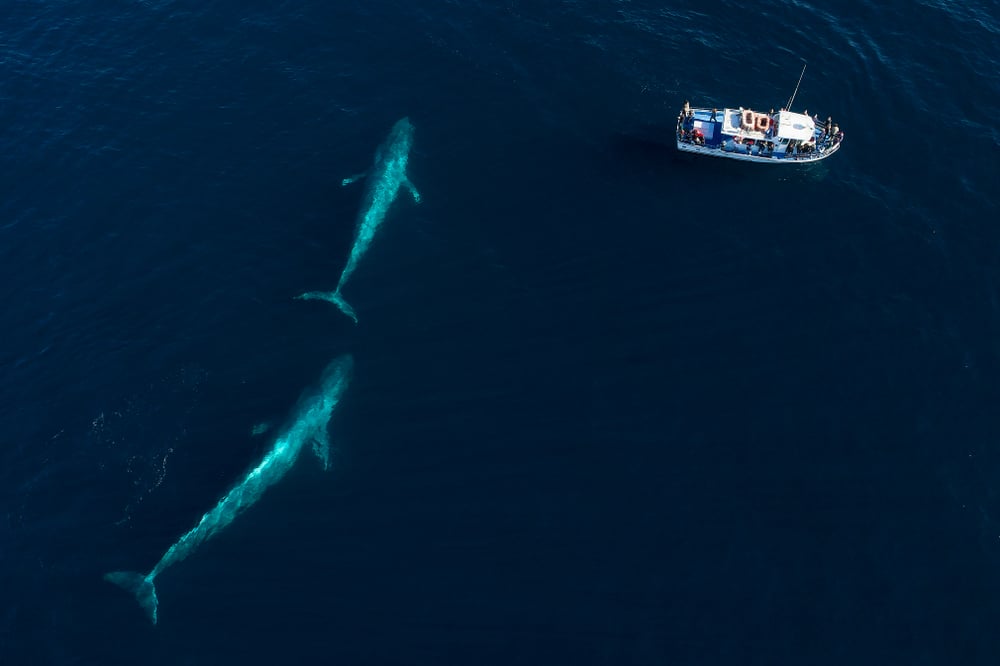
Recommended Video for you:
Terrestrial Constraints: Gravity
The physics of size work differently depending on one’s environment. One of the biggest limiting factors on size is gravity. On land, the effect of gravity is much greater than in water.
Square-Cube Law
This limits the size of an animal to as much as its skeleton can support the weight of its body. As far back as 1638, Galileo Galilei wrote about a gravity-imposed limit on the size of animals. He noted in his paper Dialogues Concerning Two New Sciences that the “…ratio of two volumes is greater than the ratio of their surfaces”. This is what came to be known as the Square-Cube Law.
Imagine if we were to expand an elephant to 10 times its original size. This doesn’t just mean that the elephant is 10 times as big as it was before. In height and length and width, sure, but not for all of its other size-related properties.
There are two other size-related properties to consider—surface area or the skin that covers an animal, and the volume or all its organs and other stuff on the inside. When the elephant expanded, its surface area or the skin cover increased 100 times, and its volume increases by 1000 times! This is the Square-Cube Law.

One square inch of the larger elephant would have to support 10 times as much weight as a normal elephant’s bones. This is a tremendous amount of pressure for the elephant’s legs to withstand. It probably wouldn’t be able to walk. To endure the extra weight, it would have to either have stouter legs (imagine a stout short elephant running around) or it could take a more “giraffe route”, setting its legs up obliquely and compressing its body.
The larger an animal gets, the more it must deal with the force of gravity acting on its body.
Gravity In Water
Gravity acts in water too, but a little differently. The buoyancy of water and that of air is different. Buoyancy is the upward force exerted by a fluid on an immersed object that opposes it. Water offers more buoyant force to an object in it than air can offer. If you’ve ever noticed, things fall through water much slower than they fall through air.
This means that animals, especially mammals, can get much larger in water without experiencing the same strain on their skeletons. Marine mammals don’t have to worry too much about how much weight their skeletal structures can support (although it is somewhat important).
Also Read: Are There Limits To How Big An Animal Can Get?
Metabolic Rate And Temperature
Evolutionary biologist and geneticist J. B. S. Haldane says in his essay ‘On Being the Right Size’: “For every type of animal there is a most convenient size, and a large change in size inevitably carries with it a change of form.”
Size is important in biology. Knowing about how large or small an organism is, scientists can predict other aspects of its biology. Haldane refers to the inevitable changes that must occur within an organism’s body and physiology as they scale up or down the size charts.
Every living thing produces heat when they consume food to produce energy. These chemical reactions in cells are generally known as the metabolism. Many of these reactions are related to breaking down food to yield energy, producing heat as a byproduct.
Smaller animals tend to have more surface area compared to their volume. This means that they lose heat generated through metabolism through their skin faster than a larger animal with a smaller surface area-to-volume ratio. This “forces” smaller animals to have a faster metabolism, which means eating more food to keep their body temperature stable. For example, a rat needs to eat about one-third of its body weight in food every day to survive.
Without a fast metabolism, small animals might freeze.
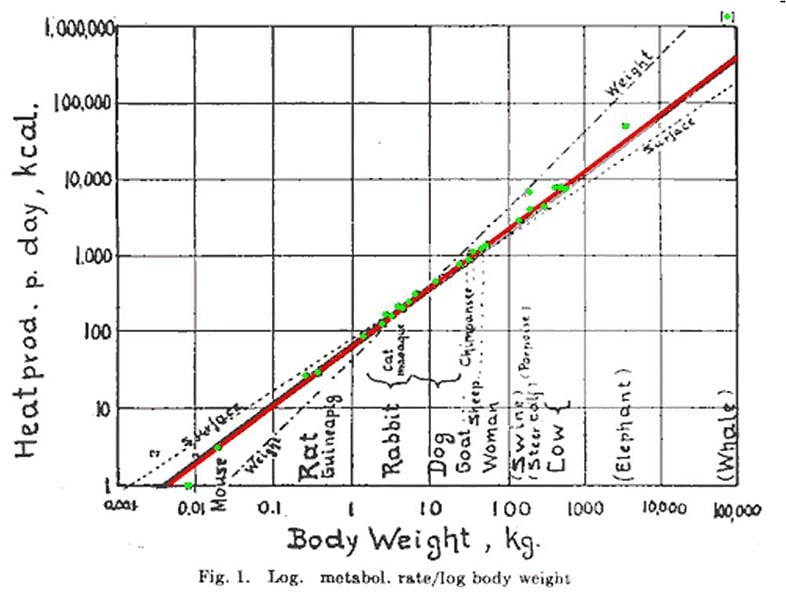
Kleiber’s Law
Large animals face the opposite problem. If their metabolism functioned the way rats did, they would combust due to all the heat their body produced (well, they wouldn’t literally combust, but they certainly wouldn’t survive long). So, these large animals slow their bodies down, and as a result, they have to eat less to sustain their bodies, as compared to smaller animals.
This is called Kleiber’s Law, which is modified from Rubner’s Rule.
An investigation on size and temperature led by William Gearty of the Department of Geological Sciences at Stanford showed that water drives mammals towards largeness. This is due to water’s heat conductance.
Water is a good conductor of heat. For marine mammals, the only way to not freeze is to get large enough that your insides are producing enough heat to combat the loss of heat to the water. More cells means more units producing energy, which means more heat.
The blue whale, it should be noted, can reach such massive proportions because it doesn’t have to spend much energy on eating. Its filter-feeding strategy means that it simply sucks in water filled with tiny microscopic particles of food. There is no need for swimming around or strategizing on how to catch food when it’s already floating in the water around you.
What Is The Largest An Animal Can Get?
On land, we can look to an extinct dinosaur for the extremes of height and weight that an animal could reach. The titanosaur Patagotitan mayorum reached 37 meters (~120 feet) in length and weighed a whopping 69 tons. Scientists estimate that this must be the upper limit for any land animal’s size.
Mammals could reach such proportions as the titanosaurs, but none have gotten there yet. The largest land mammal is an extinct rhinoceros Paraceratherium. Its exact largeness is still unknown, but estimates from the incomplete fossil evidence we have suggest that it was 4.8 meters (15.7 feet) tall and 7.4 meters long (24.3 feet), weighing 15 to 20 tons.
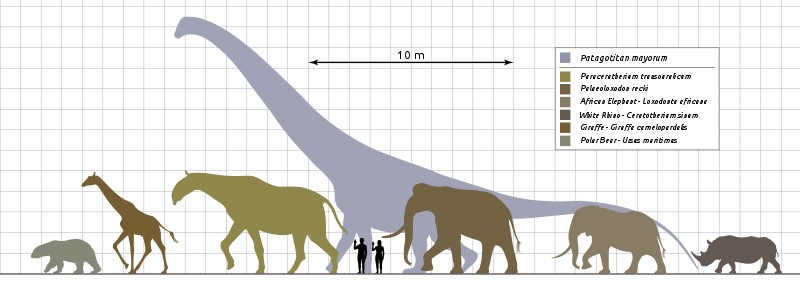
Why mammals haven’t reached titanosaur-like massiveness on land might be due to how much food was available, as well as different physiologies. According to research, dinosaurs didn’t burn through their energy as fast as mammals did. This slower and potentially more efficient energy metabolism, along with the abundance of food, allowed many dinosaurs to reach sizes that mammals haven’t been able to achieve.
The blue whale is the current all-time champion of size. It beats all other beasts of the land, oceans and skies to take the top spot for the largest mammal, and animal. For marine mammals, the blue whale sets the upper limit.
Largeness is fascinating, but that doesn’t mean all animals should strive to become a blue whale or an elephant. Evolution works to find the best possible solution that allows a creature to adapt to its surroundings. Perhaps its best for a pigeon to remain, well…. pigeon-sized, rather than become the largest flying bird around. It would be an interesting sight to see an elephant-sized pigeon flying through the skies, but that will probably have to stay in the realm of fantasy!
Also Read: Why Earth No Longer Has Animals As Huge As Dinosaurs?
References (click to expand)
- ON BEING THE RIGHT SIZE - J. B. S. HALDANE : J. B. S. HALDANE : Free Download, Borrow, and Streaming : Internet Archive - archive.org
- Body Size and Temperature: Why They Matter - Nature. Nature
- McNab, B. K. (2009, July 21). Resources and energetics determined dinosaur maximal size. Proceedings of the National Academy of Sciences. Proceedings of the National Academy of Sciences.
- Gearty, W., McClain, C. R., & Payne, J. L. (2018, March 26). Energetic tradeoffs control the size distribution of aquatic mammals. Proceedings of the National Academy of Sciences. Proceedings of the National Academy of Sciences.
- Clauset, A. (2013, January 10). How Large Should Whales Be?. (R. Lambiotte, Ed.), PLoS ONE. Public Library of Science (PLoS).

